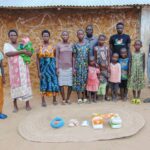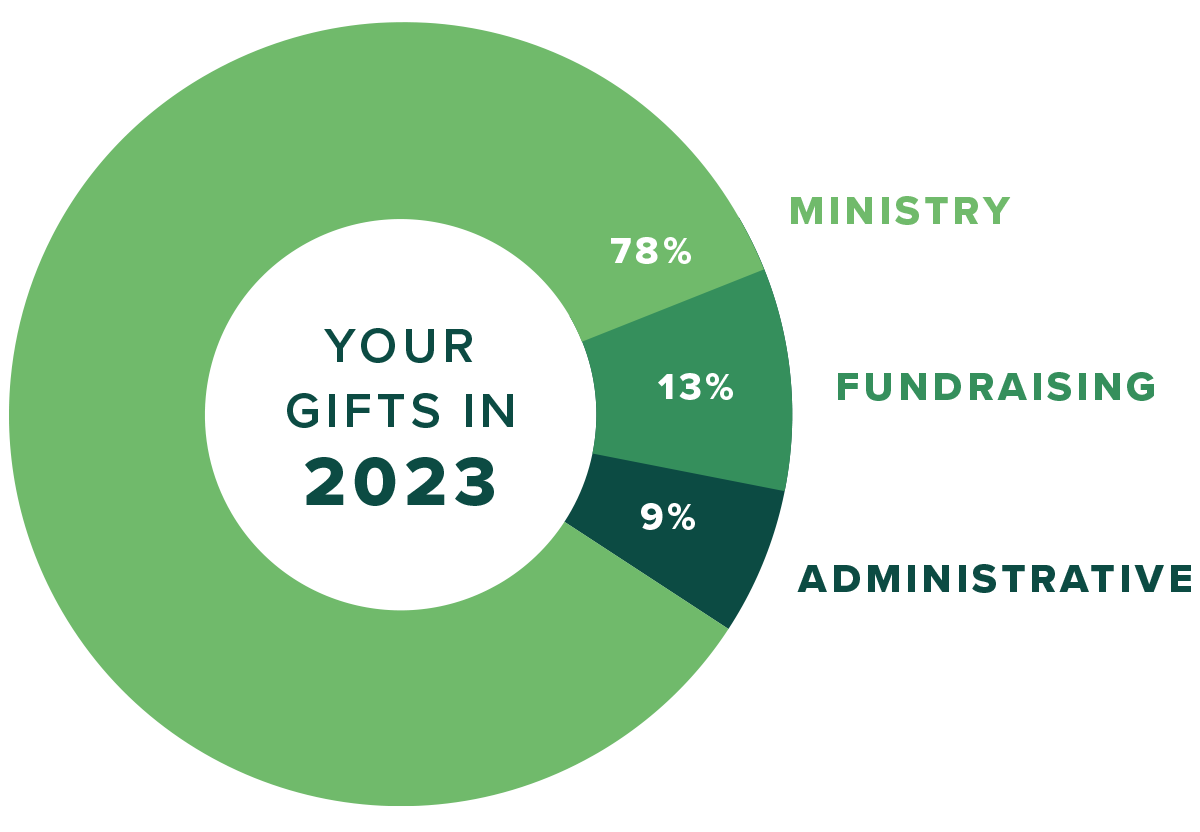The Cost of Keeping a Roof Over Their Heads Amid Inflation
Story and photos by Babylene Bocayes, Philippines Field Communications Specialist | Other photos by Tancontian Hope Center
Josephine and Reynante made the hard decision to pay higher rent for less space to give their children a safer, drier home.
Josephine’s family is paying around $45 for their current house rent, five times more than they used to pay.
The house that Josephine’s family used to rent cost only $9 a month. It had more space, and they had their own kitchen and toilet. But the roof had holes that worsened over time. On rainy days, water would leak inside, and they’d have to stay up late waiting for the rain to stop so they could dry the floor and lay down their mattress to sleep. It was uncomfortable, but somehow, they made it work for several years. Their landlord promised to fix the house many times, but he never did.
When the COVID-19 pandemic hit in 2020, and lockdowns were imposed nationwide, the family had no choice but to endure the difficult life they were already facing. Josephine’s husband, Reynante, drives a pedicab — a bicycle with a sidecar used for short-distance transportation. Suddenly he couldn’t go to work due to the lockdown. His customers were mostly people who went to the market or students heading to a nearby school, but they were also not allowed to go out because of the lockdown.
The family had no income at that time, and staying inside a broken house 24/7 for an extended period took a toll on their living conditions and safety.
When the pandemic ended and Reynante could work again, they finally decided to move, even though the rent was five times higher than it was for their previous home.
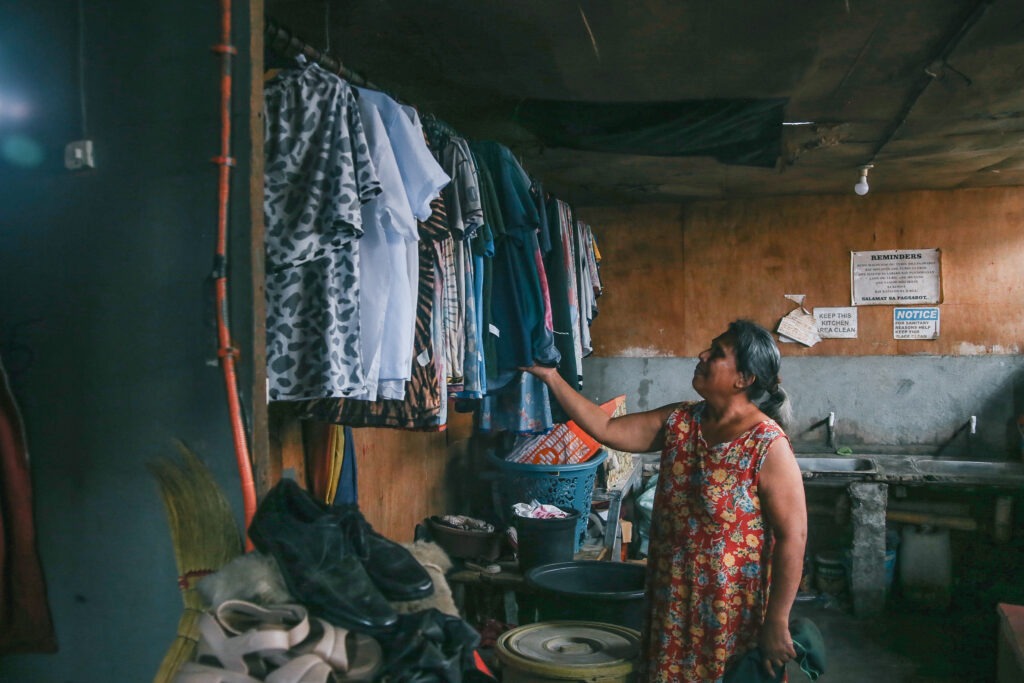
Since space is so tight in their apartment, the family hangs their clothes in a common space shared with other renters.
A Smaller House for a Big Family
Josephine and Reynante have four children: Catherine, 22, Christine, 20, John Rey, 19, and Reynaldo, 15. Catherine, who now has a family of her own, doesn’t live with them but often visits with her 1-year-old.
They currently live in a cramped apartment made of wood with a concrete foundation on the second level, shared with four other families. Their space is about 10 by 14 square feet, divided by plywood walls. The kitchen, toilet and bathroom, shared with the neighbors, are located in a common area just outside their door.
Their space is divided into two: the living and sleeping areas. As you enter the door, you will be immediately greeted with an old but working TV and stereo. On one side, pans and food containers wrapped in plastic bags are stacked beside a dish cabinet, and a small dining table on the adjacent side is filled with kitchen knickknacks.
In the sleeping area, a stack of pillows and blankets sits near a small window, and on the far side of the room is a pile of clothes. Five people manage to sleep in this tiny space. Their only small window does not give them much ventilation since it is half-blocked with the neighbor’s house.
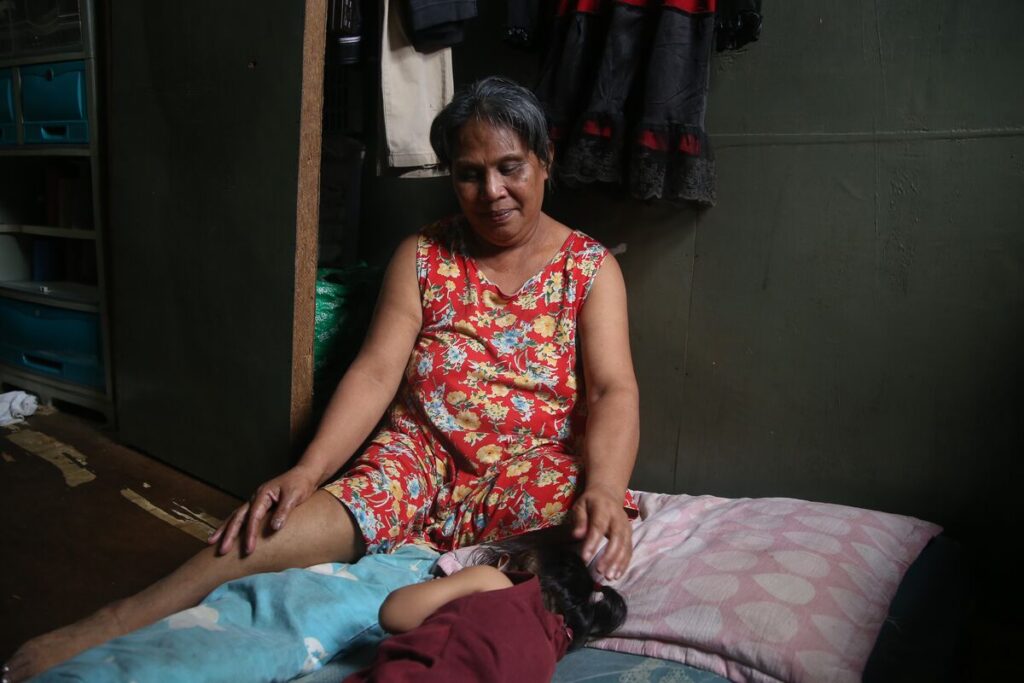
Josephine puts her granddaughter to bed.
The family is thankful that they are no longer worrying about the holes in the roof. However, their house is very cramped, and keeping up with the monthly rent is a struggle.
“I wish we could transfer to a cheaper house,” Josephine says.
According to a 2023 UN Habitat report on the Philippines, the housing shortage has been a problem due to the increase of population. This shortage is projected to increase by more than 300% in 2040. Because of this, it is harder for low-income families to find an affordable place to live.
Family Members Pitch In
A year ago, Reynante upgraded his pedicab to an e-bike, making it faster to transport passengers and less physical effort for him. He typically earns $9 to $14 daily. They purchased the e-bike with a loan, which they still pay down monthly, in addition to covering their basic expenses — food, water and electricity bills, rent, and school fees for the children. Josephine also buys food and diapers for her granddaughter whenever she visits.
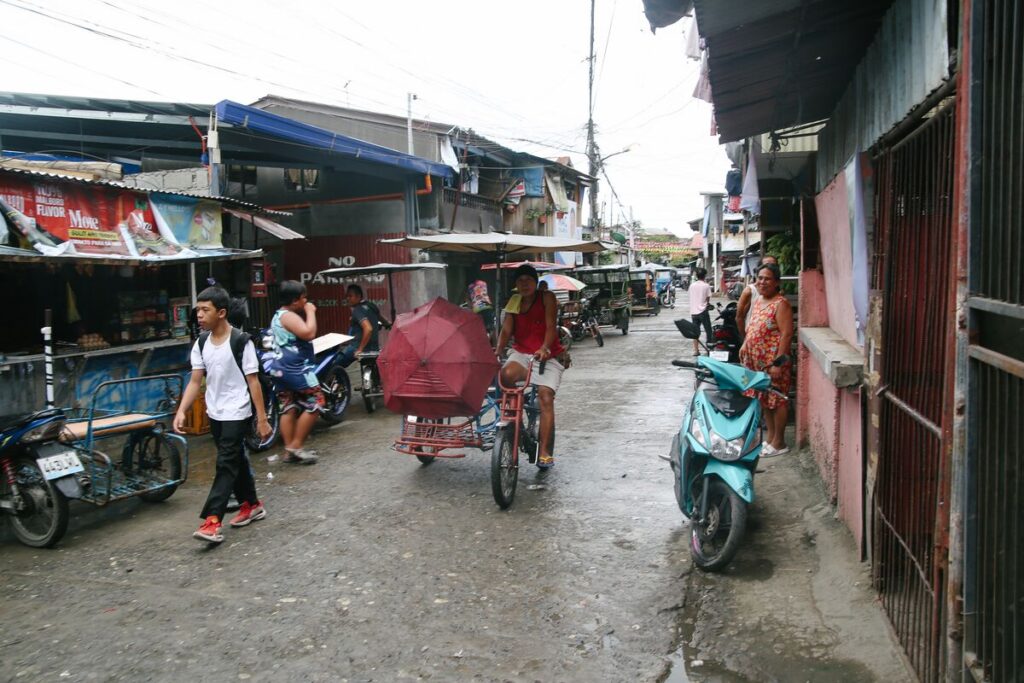
A pedicab in Josephine’s neighborhood
During those times when their money is so tight, Josephine negotiates with the apartment owner, asking if she can make a partial payment. “But I make sure that I pay on the agreed due date,” she says.
Because of their struggle to make ends meet, the family made a difficult decision for Christine to stop schooling.
“She is supposed to be in second year college taking up [a degree in] political science. But I asked her to stop for now because we really can’t afford to send her to school,” Josephine explains. Last year, they even sold some of their belongings to cover her school fees.
Christine works as a salesperson in a grocery store to help with the family’s income.
“Even if there’s nothing left from her salary, she doesn’t complain. I am thankful for her,” Josephine says.
Inflation Hits the Poor Even Harder
When the pandemic ended in 2023 and the economy slowly opened, low-income Filipino families continued to feel the effects of rising inflation.
While the Philippine government has managed to keep overall inflation within its target range of 2% to 4%[i], the prices of basic goods and services — including food, transportation, and rent — continue to rise. Meanwhile, wages remain low, especially for families living below the poverty line.
“It keeps getting worse. Before, we could eat three times a day. But now, we combine our breakfast and lunch [to save money],” says one mother from another Hope Center.
Education: Hope for the Future
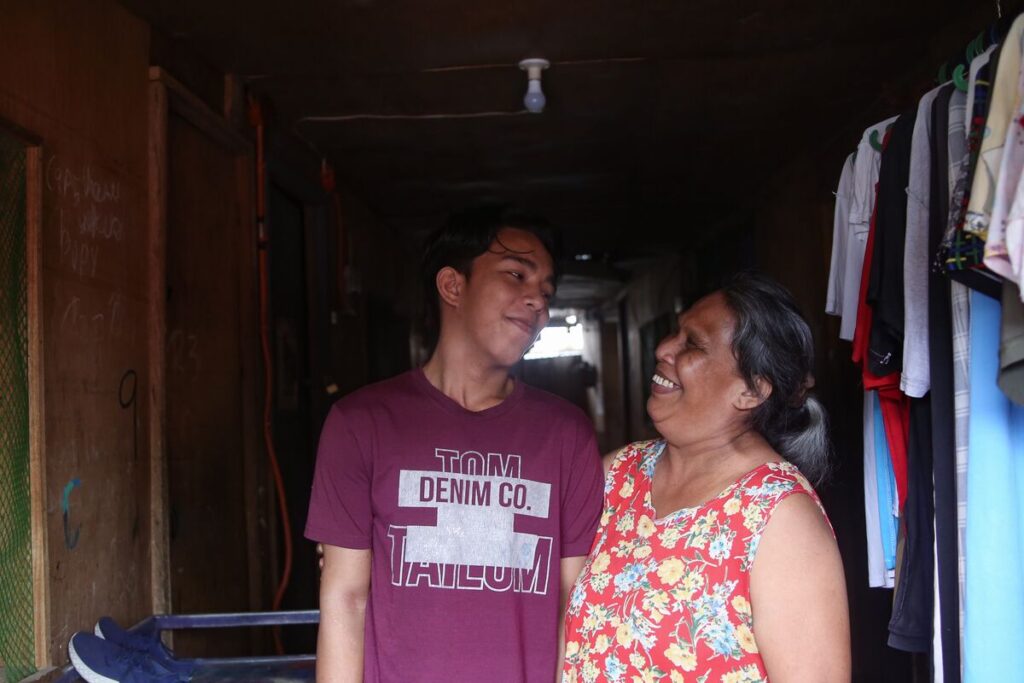
Josephine and her son John Rey smile at each other.
“At 5 a.m., I wake my kids up for school. We try our best to send them to school because we are poor, and I was not able to finish school. I tell them to do their best at school,” says Josephine, wiping away her tears. She worries deeply for her children’s future and doesn’t want them to experience the hardships they face.
Every morning, Josephine spends more than $4 to provide for her kids’ food and transportation. This amount is already more than half the daily minimum wage, about $8 in their region. Many times, her kids would bring little or no food to school or work because they did not have enough money for food.
“Sometimes, [Reynaldo] has very little money for food and transportation. His teacher will give him food. He says he feels safe in the school. His teachers love him,” says Josephine.
It is Josephine’s dream for all her children to finish their education.
The Difference the Hope Center Makes
In 2019, Reynaldo was one of the children chosen to be enrolled in Tancontian Hope Center. His parents consider it one of the best decisions they have made because Reynaldo receives not just life lessons and trainings from the Child Champions, but also material things such as school supplies, food, and vitamins.
And during the pandemic, being part of the Hope Center was a lifeline for the family through food relief.
“Every week, we received 11 pounds of rice, eggs, milk, sugar and oil,” Josephine says. “It was a huge help for us to survive [with] our daily food because we had no work.”
Josephine is thankful they have partners who help them guide and nurture Reynaldo’s hopes and dreams.
Reynaldo dreams of many things. He wants to become a teacher and a social worker, but especially a policeman. And Josephine believes his dream is now within reach, knowing how kind, diligent, resilient, and hardworking her son is.
“Out of my four children, he is the sweetest,” says Josephine. “When he wakes up in the morning, he greets me and hugs me. He always goes to church, and I think God is using him to bring us to church too.”

Reynaldo answers a speaker’s question during the National Youth Congress in August 2024.
She is thankful for the Bible lessons at the Hope Center that have shaped Reynaldo’s character, his training in music and leadership (he now teaches other children music), and opportunities for him to widen his perspectives and experiences. Reynaldo was chosen as one of OneChild’s national youth leaders in the Philippines and is one of the three young people from the Hope Center chosen as representatives in a forum on Children’s Voices in Policy, Research and Evaluation Agenda Setting.
“I don’t dream of anything else but for my children to finish their education,” Josephine says.
Hope in the Midst of Hardship
In the face of poverty and rising inflation, Josephine remains hopeful that her children will one day do well in life if they learn to be content with what they have.
“I am thankful that we are still alive and happy even though our life is hard.”
[i] Philippine Information Agency. PH meets 2024 inflation target, dov’t to continue measures against sharp-rising prices — NEDA. Retrieved March 20, 2025, from pia.gov.ph/ph-meets-2024-inflation-target-govt-to-continue-measures-against-sharp-rising-prices-neda
